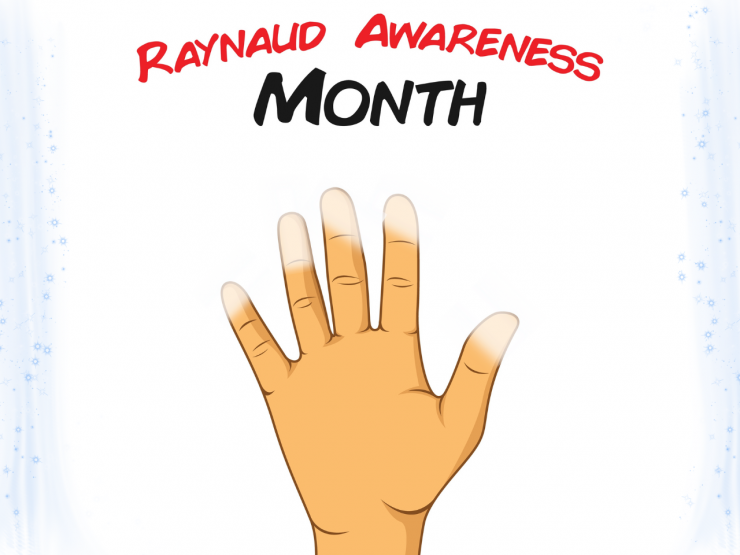Raynaud’s
Every February is Raynaud's Awareness Month.
Have you ever heard of Raynaud’s; do you know what it is?
This month’s blog will focus on raising awareness and suggest solutions that may help if you suffer from this common yet widely unknown disease.
Have you noticed your fingers and toes turning a pale blue or white when exposed to the cold, when you are feeling stressed or anxious?
Does the affected area feel numb and difficult to move?
Do you experience a stinging, prickly burning sensation when you’re warming back up after coming back inside to the warm. Is the skin of the affected areas becoming red and swollen.
If you find yourself thinking yes, it’s possible you may be experiencing symptoms of Raynaud’s disease.
Raynaud’s is a progressive health condition that affects your blood circulation, it causes spasms (vasospasms) in the smaller arteries that are responsible for the blood supply to your skin. Causing them to narrow and restrict the blood flow to the areas affected.
It is an exaggerated response to the body’s reaction to cold, stress or anxiety.
Symptoms:
· Skin appears pale, usually white or blue
· Numbness or lack of sensation
· Difficulty in moving the areas affected
· Pins & needles
· Burning & stinging sensation upon warming
· Swelling of affected areas when warming
· Skin appears red when blood flow resumes as normal
Raynaud’s is an episodic condition meaning it is intermittent and comes and goes and is not constant. An episode will usually last around 15 minutes to an hour after been stressed feeling anxious or cold exposure.
Raynaud’s can affect your:
Fingers
Toes
Nose
Lips
Ears
Nipples
Knees
Generally, the condition is not serious nor a cause for concern and can be prevented by keeping yourself warm. However, sometimes it can be resultant of certain medicines, a condition which is more serious or from long term work with tools that vibrate.
Most of those suffering from Raynaud’s find it is not a serious problem but more so an inconvenience. Therefore, it may help to avoid situations and conditions that can trigger a flare up of symptoms.
How can you relieve and prevent your Raynaud’s from flaring up:
· Keep your house or place of work warm
· Layer up in warm clothing in the cold seasons and weather, thick gloves & socks
· Start regular exercise to improve your circulation
· Try to maintain and eat a balanced healthy diet
· Yoga and breathing exercises to help you decompress and relax
· Quit smoking as this has a huge impact on circulation
· Reduce your caffeine intake (cola, chocolate, tea & coffee)
Sometimes the symptoms of Raynaud’s can become worse and develop over time and cause severe discomfort and pain. In this event you should seek advice and treatment from a GP.
It may be that you suffer from secondary Raynaud’s. It could be a pre cursor or sign of Lupus, Scleroderma or Rheumatoid arthritis which are much more serious conditions.
Depending on the severity and nature of your Raynaud’s as well as the individual a GP may prescribe a medicine such as Nifedipine to help aid and improve circulation.
You may only need to take this when the weather is cold but in some cases, it may needed to be taken daily.
Do you need more advice and support? Then we advise you contact the good folk at SRUK.
SRUK is a charity dedicated to helping people who suffer from Raynaud’s and Scleroderma.
Data Sourced from*



